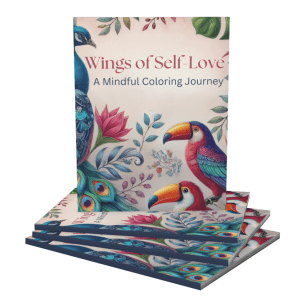
Key Takeaways
Inner child healing is crucial for overcoming past trauma and fostering personal growth.
Forgiveness, including self-forgiveness, is a transformative step in healing the inner child.
Recognizing the signs of a wounded inner child can guide you toward the right healing practices.
Simple, actionable steps can be taken daily to nurture forgiveness and self-compassion.
True healing involves both letting go of past hurts and embracing the present with openness.
Understanding the Wounded Inner Child
Imagine carrying a small, invisible backpack every day. Now, picture that it’s filled with every harsh word, neglectful action, and painful experience from your childhood. That’s the burden of a wounded inner child. It’s not something you can just shake off because it’s part of who you are. But here’s the good news: you can learn to unpack that backpack and lighten your load.
The Origins of Inner Pain
Our inner child is shaped by our earliest experiences. The moments of joy and love are there, but so are the times of hurt and disappointment. When we don’t address these past pains, they can manifest as fears, insecurities, and destructive patterns in adulthood. But why does this happen? Because our inner child stays with us, holding onto those memories and emotions until we’re ready to deal with them.
Identifying Signs of a Hurt Inner Child
So, how do you know if your inner child is wounded? Look for signs like difficulty trusting others, feelings of inadequacy, or a harsh inner critic. Maybe you find yourself overreacting to small things or avoiding emotional intimacy. These are clues that it’s time to pay attention to your inner child.
Example: Sarah always found herself lashing out at her partner over minor misunderstandings. After some reflection, she realized it was a response rooted in her fear of abandonment, a fear that took hold when her father left her family when she was eight. That was her wounded inner child acting out.
Embarking on a Journey to Forgiveness
Forgiveness is the key that unlocks the door to healing your inner child. It’s not about saying what happened was okay; it’s about deciding that you don’t want to carry the anger and hurt anymore. It’s about setting yourself free.
Accepting the Past and Embracing the Present
Start by acknowledging your past—every bit of it. Accept that it happened and that it shaped you, but it doesn’t have to define you. From there, you can begin to let go and move forward. Remember, forgiveness is a gift you give yourself, not just to those who hurt you.
Mindful Techniques to Foster Forgiveness
Reflect on your experiences and acknowledge the pain they caused.
Understand that forgiveness is a process and may take time.
Practice self-compassion—treat yourself with the kindness you would offer a good friend.
Use visualization techniques to imagine your inner child being happy and free from pain.
Most importantly, know that forgiveness isn’t a one-time event. It’s a journey. And like any journey, it has its ups and downs. But every step you take lightens your load a little more, making room for more joy, love, and peace in your life.
Overcoming Self-Criticism and Guilt
One of the toughest parts of healing is dealing with the self-criticism and guilt we carry. It’s like having a little voice inside your head that constantly tells you you’re not good enough or that you’re to blame for everything. To quiet this voice, we need to learn to be gentle with ourselves. Start by recognizing that you did the best you could with the knowledge and resources you had at the time.
Compassionate Practices for Self-Acceptance
Self-acceptance is about acknowledging your worth, flaws and all. It’s understanding that your worth isn’t based on your past or what you’ve done, but on who you are as a person. To foster this, practice self-compassion. Speak to yourself like you would to a dear friend. Remind yourself of your strengths and the challenges you’ve overcome.
Nurturing Your Inner Child Through Forgiveness
When you forgive, you start to heal. And as you heal, you begin to see the world with a sense of wonder and excitement again. It’s like when you were a kid and everything was new and interesting. That’s the joy of reconnecting with your inner child. It’s not just about healing old wounds—it’s about rediscovering the joy and curiosity of life.
Creative Approaches to Re-engage with Playfulness
Getting back in touch with your playful side is a beautiful way to nurture your inner child. Try dancing to your favorite music, coloring, or playing a game. It doesn’t have to be complicated; it just has to be fun. When you play, you give your inner child permission to come out and express themselves.
Maintaining an Ongoing Dialogue with Your Inner Self
Keep the lines of communication open with your inner child. Check in with yourself. How are you feeling? What do you need? Sometimes, your inner child might need a good cry or a day off to just be. Other times, they might need a pep talk or a reminder of how loved they are. Listen and respond with love and care.
Tools and Exercises for Enhancing Inner Child Forgiveness
There are practical tools and exercises you can use to deepen your forgiveness work. These are designed to help you let go of the pain and embrace the healing. For more detailed guidance, explore our article on unlocking creativity techniques and their benefits in inner child healing.
Visualization and Affirmation Techniques
Visualization is a powerful tool. Imagine your inner child, see them happy and healed. Use affirmations to reinforce your forgiveness journey. Repeat phrases like “I am worthy of love and healing” or “I release the past and embrace the present with an open heart.”
Journaling and Letter Writing to Release Old Wounds
Writing can be a cathartic experience. Journal your thoughts and feelings, or write a letter to your inner child. You might even write a letter to someone who hurt you. You don’t have to send it; it’s just a way to get those feelings out.
Positive Transformations Through Forgiving Others
Forgiving others can lead to incredible transformations. When you let go of resentment, you free up so much energy that was tied up in negative feelings. This energy can then be redirected into something positive, like pursuing your passions or deepening your relationships.
Letting Go of Resentment Towards Parents and Caregivers
Many of us carry hurt from our relationships with our parents or caregivers. Remember, they’re human too, and they made mistakes. Forgiving them doesn’t mean you’re okay with what they did. It means you’re choosing to let go of the hold it has on you.
Setting Boundaries for Healthier Relationships
Forgiveness doesn’t mean you have to allow people to continue hurting you. Setting boundaries is a way of protecting yourself. It’s saying, “I value myself enough to demand respect and kindness.” Boundaries can be tough to establish, but they’re essential for healthy relationships.
Moving Forward: Life After Inner Child Healing
Life after inner child healing isn’t a fairy tale where everything is perfect. But it is a life where you’re free to be yourself, to grow, and to find happiness. It’s a life where you can look back at your past with a sense of peace, knowing it no longer controls you.
Moving Forward: Life After Inner Child Healing
After the inner work of healing your inner child, you step into a space of empowerment. This is not the end of the journey, but rather the beginning of a new chapter, one where you get to author your story with intention and self-love. The healing you’ve embraced allows you to move forward with a lighter heart and a clearer mind, ready to experience life’s joys without the weight of the past holding you back.
Embracing Growth and New Beginnings
With each act of forgiveness, you plant seeds of growth. These seeds take root, and soon enough, you’ll find yourself blossoming in ways you never imagined. New beginnings might feel scary, but they’re also incredibly exciting. Embrace the unknown with the same curiosity and openness that your inner child would, and watch as your world expands.
Celebrating Personal Achievements in the Healing Process
Celebration is a key part of the healing process. Honor every step you’ve taken, every moment of courage, and every tear shed in the name of growth. These achievements are milestones on your personal journey and deserve recognition. Whether it’s through a quiet moment of gratitude or sharing your progress with loved ones, take the time to celebrate you.
Frequently Asked Questions (FAQ)
Can you fully heal your inner child?
Healing is not about reaching a perfect state where the past never affects you. It’s about developing a nurturing and compassionate relationship with your inner child so that past wounds no longer dictate your life. Full healing is an ongoing process where you continually learn to offer yourself love and acceptance.
And remember, healing is not linear. There will be ups and downs, but each step forward is a victory.
How do you practice self-forgiveness on a daily basis?
Practicing self-forgiveness daily involves becoming aware of your self-talk and gently guiding it towards kindness. When you notice self-criticism, pause and reframe those thoughts with compassion. Remind yourself that mistakes are part of being human and that each day offers a new opportunity for growth.
Additionally, set aside a few minutes each day to reflect on any actions or thoughts you wish to forgive yourself for. Acknowledge them, learn from them, and then let them go with love.
Is it necessary to forgive others to heal your inner child?
Forgiving others is not about excusing their actions; it’s about freeing yourself from the hold that resentment has on your heart. While it’s not strictly necessary to forgive others to begin healing your inner child, doing so can significantly lighten your emotional load and create space for more profound healing.
Remember, forgiveness is a personal journey, and it’s okay to take it at your own pace.
What role do parents play in inner child healing?
Parents often play a significant role in the formation of our inner child’s wounds. Recognizing and understanding this impact is vital. However, healing is about taking responsibility for your emotional well-being now, regardless of your parents’ actions or inactions.
Some find that rebuilding or redefining relationships with their parents is part of their healing journey, while others may choose to maintain distance. The key is to do what’s healthiest for you.
Communication: Openly discussing your feelings and boundaries with parents can be therapeutic.
Understanding: Seek to understand the context of your parents’ actions, which can sometimes aid in the forgiveness process.
Independence: Establish your emotional independence from your parents, focusing on your needs and well-being.
How long does it take to see the effects of inner child healing?
Healing is a deeply personal experience, and the timeline can vary widely from person to person. Some may notice shifts in their thoughts and behaviors relatively quickly, while for others, it may be a more gradual process. The key is consistency and patience.
Most importantly, it’s not about how quickly you heal but about how authentically you engage with the process. Trust that with each step, you’re making progress, even if it’s not immediately visible.
And as you continue on this path, remember that healing your inner child is one of the most profound gifts you can give yourself. It’s a journey that takes courage, but it’s also one that leads to a life filled with more freedom, happiness, and peace. So be gentle with yourself, celebrate your bravery, and keep moving forward—one step, one breath, one act of forgiveness at a time.




Leave a Reply